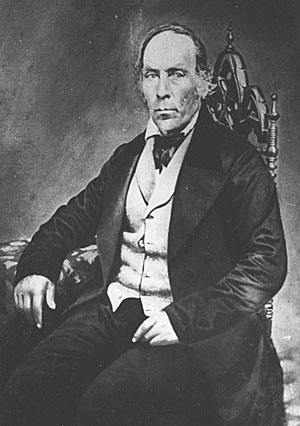About Us
 Juan Felipe Peña
Juan Felipe Peña
Located on Peña Adobe Road off Interstate 80 is Peña Adobe Park. The center of attraction at the 1 - acre historical park is the oldest structure built in Solano County, the Peña Adobe, California historical landmark #534 and the former home of the Peña family.
Some of the first settlers to arrive in Solano County were the families of Juan Manuel Vaca and Juan Felipe Peña. The Peña family included Juan Felipe Peña, his wife Isabella Gonsalves, five sons and one daughter. Having previously lost his wife in 1839, the Vaca family consisted of Juan Manuel Vaca and his eight children. The Vaca and Peña families traveled from the New Mexico region to California following the Old Spanish Trail which terminated at Pueblo de Los Angeles. Arriving in southern California after their two month journey on November 15, 1841, they met General Mariano Vallejo, who maintained his headquarters in Sonoma, following Mexico's independence from Spain. He told them of fertile land in the north called the Laguna Valley, and agreed to grant them a vast amount of this land if they fulfilled the requirement to build homes, plant trees and pasture livestock within one year. The families continued north on the El Camino Real through Santa Barbara to Monterey arriving, in what later became, the Vaca Valley.
The Peña Adobe was erected in 1842. The simple adobe with its dirt floors and four windows still has the original hand-hewn redwood timbers which were cut in the hills near Napa. The walls are two feet thick and made of 23x10x3 adobe mud bricks. 25 Mission-trained Indians sun dried the adobe bricks and built both Vaca and Peña's adobes. (The Vaca Adobe was built to the east of the Peña Adobe. It was destroyed by the earthquake of 1892.)
When the families had satisfied Vallejo's requirements, the 44,384 acre site named Rancho Los Putos, was officially granted to Vaca and Peña in 1845. The territory encompassed all of Lagoon Valley and stretched into Yolo County. Both families engaged in cattle ranching as hides and tallow were the principal source of trade and income.
On August 21, 1850 Vaca sold a portion of his land to William McDaniel for three thousand dollars. The transaction included the specific condition said McDaniel is to lay off on any one square mile of said land a town to be called Vacaville. Vacaville was founded the following year in 1851.
Juan Felipe Peña died on March 15, 1863. Mrs. Peña lived in the Peña Adobe until her death in 1885 being cared for by her only daughter, Nestora. While all the Vaca land holdings were sold by 1880, Nestora Peña retained her inheritance until eighty years of age, and lived in the Peña Adobe until after the death of her husband in 1900. She later moved to Vacaville where she resided until her death in 1922. Having no children, she deeded her inheritance, consisting of the Adobe and 90 acres, to the two oldest Peña grandchildren, Maria Delores Peña Lyon, and her cousin Vidal Peña. The Adobe remained with their children until 1957, eventually becoming a Vacaville City park in 1965.
The Peña Adobe Historical Society was established in 2004, staffed by volunteers, this nonprofit organization is committed to preserving the Adobe. The park now includes the Mowers-Goheen Museum, the Willis Linn Jepson Memorial Garden, Indian Council Ground and picnic and recreation facilities.
Today this gateway to Vacaville is open the first Saturday of the month February thru December and private tours upon request with interpretive programs provided by the Peña Adobe Historical Society.